hFilm review by Jason Day of the early sound movie version of the Robert Louis Stevenson horror movie about a scientist attempting to separate the bestial side of human nature from the pure. Starring Fredric March and Miriam Hopkins.
To like this post, comment on it or follow this blog, please scroll to the bottom. Use the search function on the left of the screen to look for other reviews and updates.
Director: Rouben Mamoulian. 98mins. Paramount.
Cast & credits
Producer: Adolph Zukor.
Writers: Samuel Hoffenstein, Percy Heath.
Camera: Karl Struss.
Sets: Hans Dreier.
Fredric March, Miriam Hopkins, Rose Hobart, Holmes Herbert, Halliwell Hobbes, Edgar Norton, Tempe Pigott.
Synopsis
Impulsive and impatient, Dr Henry Jekyll (March) is the renegade medical professional happiest pushing the boundaries of scientific knowledge and acceptability with his outrageous lectures on the nature of man’s soul. Even in his private life, he bends levels of decency by forcing the hand of his influential and prospective father-in-law (Hobbes) into marrying his daughter Muriel (Hobart). Enraged with sexual frustration at being made to wait for his nuptials, Hyde concocts a potion which he hopes will rid himself of the libidinous side of his personality. Instead, his efforts unleash that hitherto hidden half of himself on society, the violent and sexually aggressive Mr Hyde who forces himself on Music Hall singer Ivy Pearson (Hopkins). A chain of tragedy commences as Jekyll struggles to control Hyde.
Review, by Jason Day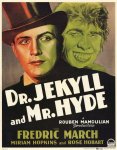
I’ll show you what horror means.
Novelist Robert Louis Stevenson’s 1886 Victorian horror-of-the-smog was a chemically induced precursor of the real-life Jack the Ripper crimes which would grip the British consciousness only two years later. Mr Ripper made real Stevenson’s fictional account of the beast who resides within all men, who walks the street by day, just waiting to jump out and commit all sorts of atrocities on any woman he happens across.
There had been at least eight silent film adaptations, including one in 1920 featuring a star-making performance from John Barrymore, before the innovative theatre director Mamoulian who had just started dabbling in cinematic productions was given a shot. This adaptation though still rested strongly on the much-used and celebrated stage adaptation by T.R. Sullivan’s 1887, which deviates from Stevenson’s original story.
Mamoulian was noted for his sophisticated technical innovations, freeing sound cinema from the confines of the early sound recording equipment cluttered around it. This oddity from Paramount studios, famous for their refined, sexually charged, drawing room comedies shows him in full flight.
Immediately noticeable is the heavy use of subjective camera for the extended opening scene as Dr Jekyll prepares for his lecture. Helping us empathise from the get go with the dichotomy this learned man experiences about the two sides of his personality, Mamoulian’s camera casts the viewer as Jekyll putting on his/our cap and top hat, viewing himself/ourself in the mirror before heading off into his/our coach and making his/our way to the lecture theatre. The invigorating use of mobile camera during these scenes is the icing on the stylistic cake.
At the time he was making this film, he wanted to push even further with this technique and tickled at the seams of putative Hollywood screen censorship (cinematic decency being stretched as Jekyll does the same with social, moral and sexual behaviour), the so-called ‘Code’ which was set but not rigorously enforced at this time.
His camera firmly placed as us, we all see slatternly Ivy Pearson (Hopkins) remove her stockings and garter belts and fling them at Jekyll/us, the two of them laughing with unbridled delight and Ivy clearly showing a ‘side boob’. (The film was reissued a few years later, but these scenes were cut, meaning for many years Hopkins’ pivotal second billed role was reduced to little more than five minutes of screen time).
Mamoulian plays with this subjective camera identification throughout the film, such as when he switches it to Jekyll’s moralistic friend Lanyon (Herbert) catches him on the bed with the free and easy singer Ivy Pearson (Hopkins).
Mamoulian’s use of close-up is intense and almost uncomfortable. Jekyll wishes to look deep into the soul of man and does so into his women by staring long and deep at them, either as he woos Muriel (and March has to compensate for Hobart’s wooden acting) or terrifies Ivy.
Mamoulian kept the extraordinary Jekyll-to-Hyde transformation a secret for decades after the film had been released, but it was no simpler than applying make-up in contrasting colours. Coloured filters than picked it up, or made it invisible, as the filters were added or removed. Make-up artist Wally Westmore’s primeval, simian make-up at the end completed the effect. (When Hyde first emerges, he stretches noisily, as if just freed from the suffocating womb of respectability and declares “Free! Free at last!”).
“If you could see me now, what would you say?” Hyde comments after one transformation, completely oblivious to the fact it would prove his critical peers correct.
Jekyll’s impetuosity is neatly conveyed throughout the film with a recurring visual motif of lingering lap dissolves. As Hyde juggles his two lovers, never more daringly than when Ivy dangles her toned leg, it appears as if a clock pendulum swings, setting a time limit on his return. She whispers suggestively for Jekyll to “come back…soon”.
March won his first Oscar for this bravura, athletic and hugely entertaining performance, in a famous tie with Wallace Beery for The Champ. An accomplished stage actor, he makes an easy meal of the melodrama in the dialogue and spits it out with the aplomb of a mad scientist who deeply believes all of the nonsense he talks.
He is handsome and eager as Jekyll and deftly handles the personality switch when he changes into Hyde, lusting after Ivy and swinging about from the scenery with boundless, inhuman energy.
Hobart’s stilted and wooden ‘good woman’ might be deliberate on Mamoulian’s part, providing a clearer contrast with the less saintly and sprightly Ivy. It’s worth noting that Hobart’s Muriel never leaves the confines of her house, unlike woman about town Ivy.
Hopkins has the right sort of superficial, slatternly charm as the good time girl cum occasional singer who loves her champagne and isn’t too worried about whom is supplying it. Her comical cockney accent (“Stroike me pink”) is more adorable than annoying and her playing of this silly, indolent but doomed woman has a cheap, heart-tugging tragic irony to it.



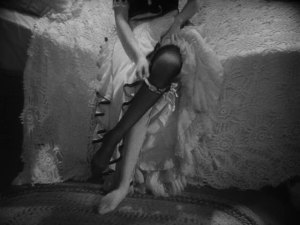
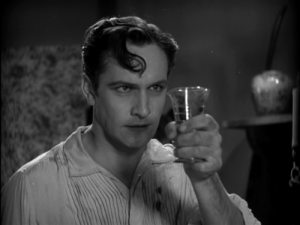
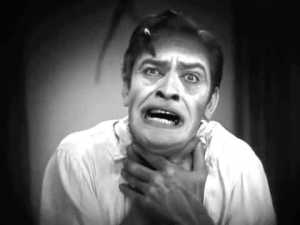

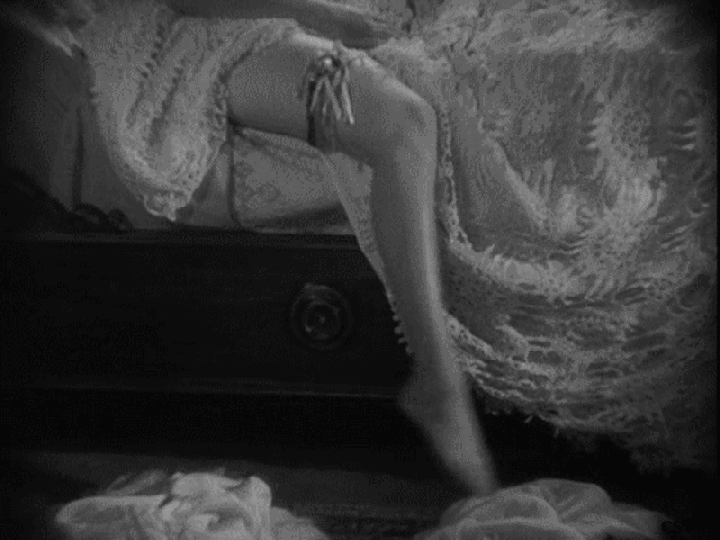
the effects are simply amazing.
LikeLike
For their time, they were very well thought out and ingenious in their simplicity. I love how Rouben Mamoulian kept schtum for decades about how the transformation was created; magicians almost never reveal their secrets!
LikeLiked by 1 person